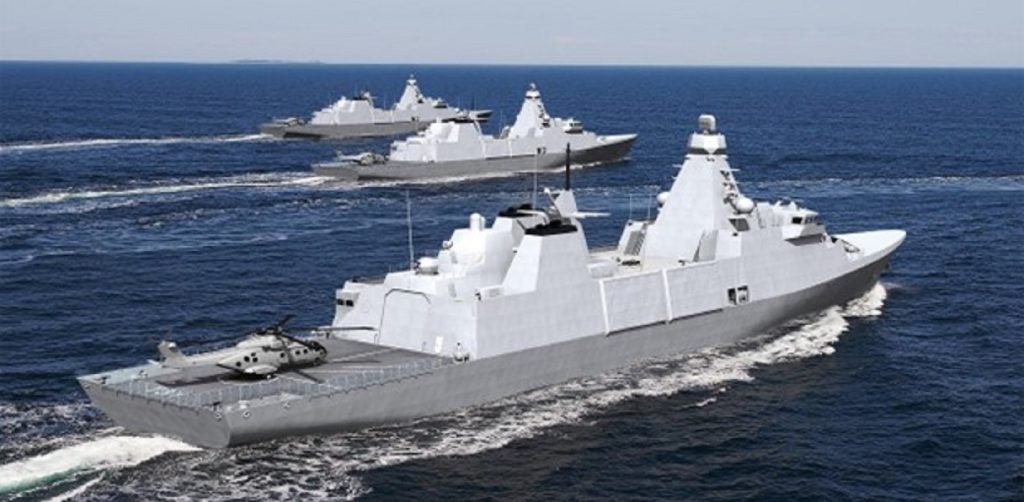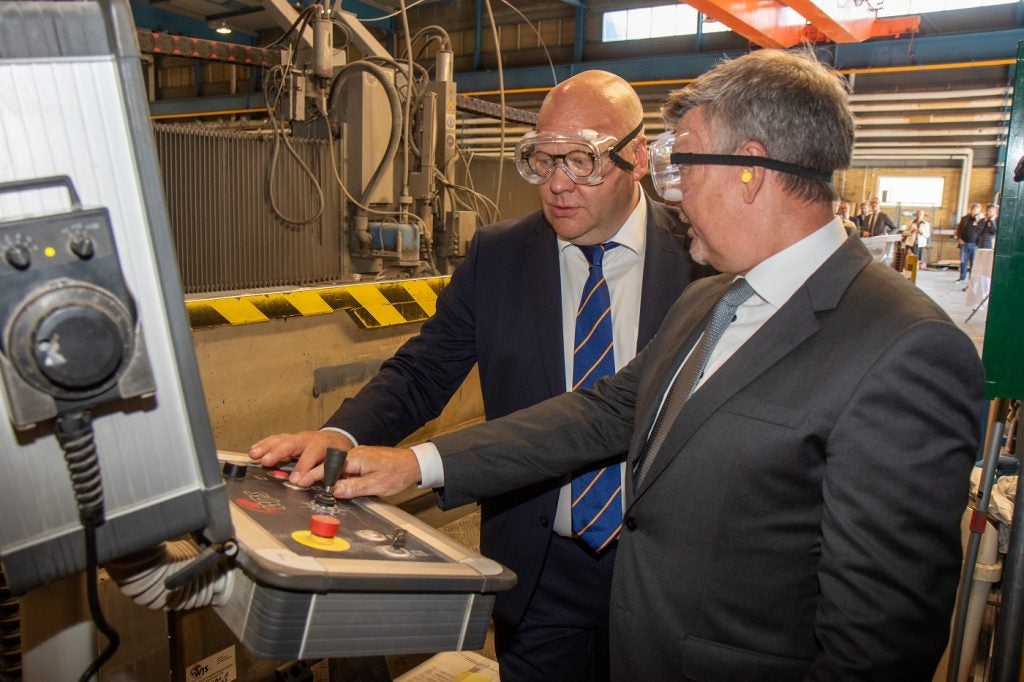South Korean main battle tanks, American fighter jets, and now British frigates? The Polish armed forces are again working to build on its diverse platform portfolio by adopting the Arrowhead 140 (AH140) frigate design.
The British defence manufacturer Babcock and Polish armaments consortium PGZ have announced a framework agreement, establishing a joint venture to work more closely on delivering Poland’s Miecznik frigate programme.
The Miecznik frigate design will be based on the AH140 frigate design, and Babcock and PGZ plan to deliver this programme by combining their shipbuilding and equipment support capabilities.
AH140 design for frigates
AH140 is a multi-purpose light frigate being developed by Team 31, which is led by Babcock. Team 31 comprises Thales Group, Harland and Wolff, BMT, OMT and Ferguson Marine. Launched in May 2018, the AH140 is designed to meet the requirements of the British Royal Navy’s Type 31 frigate programme.
The UK government is procuring five Type 31 Inspiration-class frigates to replace the Royal Navy’s Type 23 frigate fleet, which have been in service since the early 1990s.
Their strategic agreement will also seek opportunities to partner for other naval and wider defence programmes beyond the AH140 design by optimising resources, capabilities and infrastructure across both organisations.
The framework agreement follows on from the 2030 Strategic Partnership agreement between Poland and the UK, which itself comes off the back of the two countries’ Strategic Co-operation Agreement, signed in March 2022.
Poland expands capabilities through allied integration
Information-sharing on the AH140 is the latest instance of the Polish Armed leveraging foreign defence manufacturing methods, as the country looks to export its own military land vehicles.
The UK and Poland have also signed a major £1.9bn export agreement on 28 April to roll out a British air defence system across the central European nation. The deal is one of the largest bilateral European air defence deals of its kind in Nato.
As well as this, Poland has already purchased a $19m distributed interactive simulation-based systems integration laboratory from the US Department of Defense (DoD) in June this year. The laboratory consolidates the country’s expanding defence programme; it will enable Poland to establish closer military ties with the US and Nato partners with the testing of new standard system components.
Sebastian Chwałek, the PGZ CEO, affirmed Poland’s ambitions to become a European defence hub, stating: “Strengthening the potential of the Polish Navy is an absolute priority for us, but in the long term, together with Babcock we also plan to create export opportunities.
“Co-operation in the development of naval forces is also an action to strengthen the Nato, of which both our countries are extremely important representatives.”











